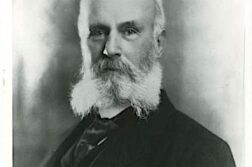STERLING HOUSTON, an experimental playwright who died last year, embodied the archetype of the American artist who moves with those dreams out into the world and comes back home with his dreams intact to carry out his major work. His life also illustrates a motif of the modern acceptance of homosexuality and the spread of gay culture: the gay  artist who goes to the big city, gets liberated, and returns home to spread the good news of liberation, urbanity, and an outsider’s perspective.
artist who goes to the big city, gets liberated, and returns home to spread the good news of liberation, urbanity, and an outsider’s perspective.
Houston created his oeuvre out of the organic whole of his life as a gay black man. He wrote over thirty plays, many of them musicals, in addition to some dramas and comedies. Typically, as in Black and Blue, one of his last productions, Houston used musical collage as a dramatic form in a jazz medium, with the drum as the primary instrument. He combined familiar songs with liberation texts, news reportage, and historical anecdote—often in high black lingo. The bite of his wit was famous. His titles hint suggestively at his subjects and themes: Isis in Nubia, Santo Negro, Cameoland, La Frontera, Cabaret de Caramelo, Womandingo, High Yello Rose, Black Lily, White Lily, Miranda Rites, and The Living Graves. (Four of these plays have been published in the aptly titled anthology, Myth, Magic, and Farce: Four Multicultural Plays by Sterling Houston, edited by Sandra M. Mayo.)






